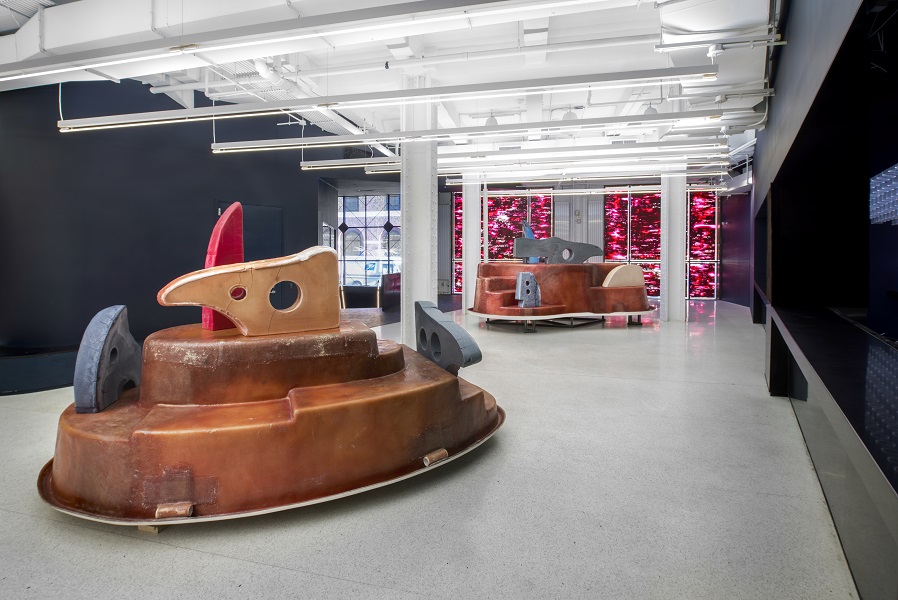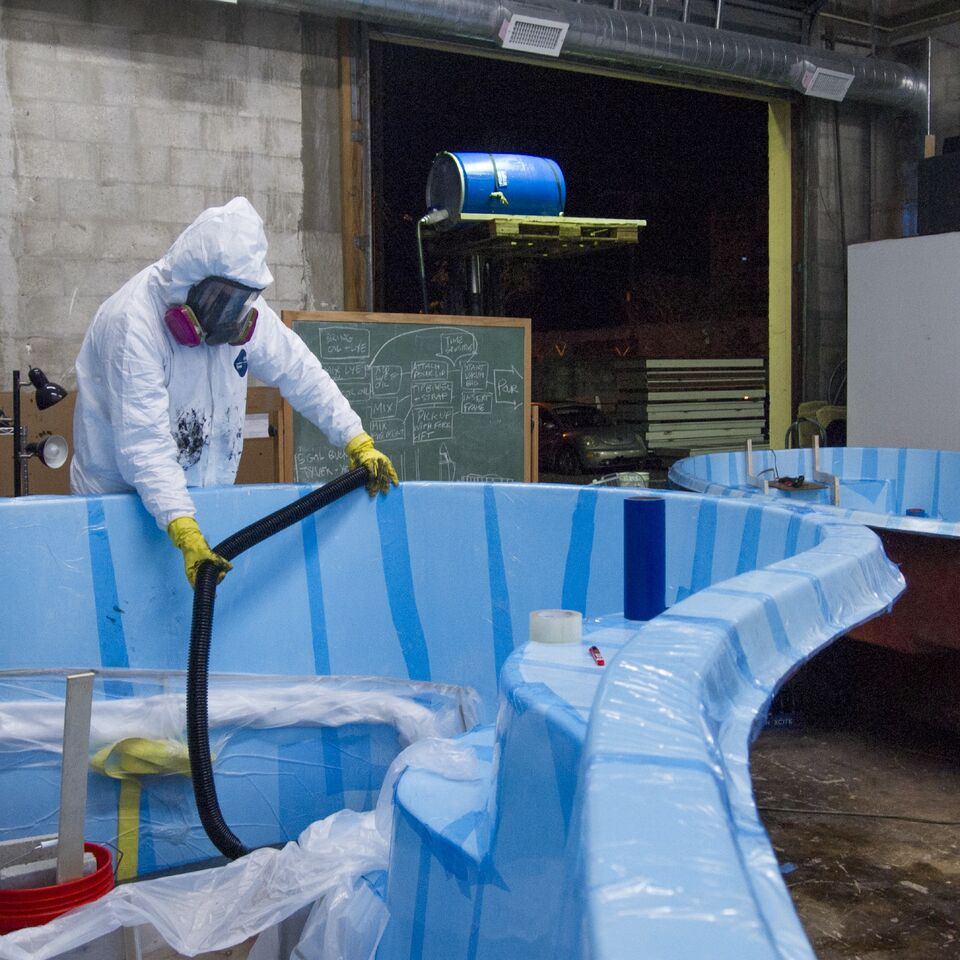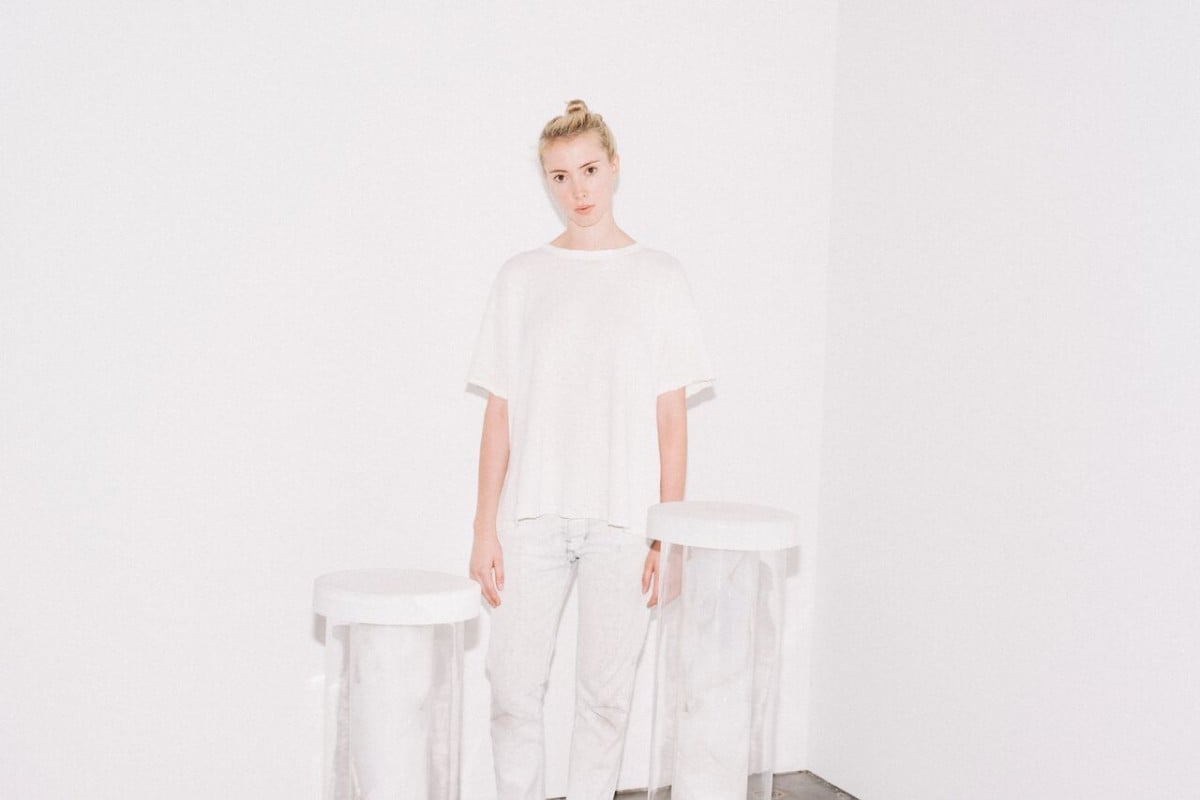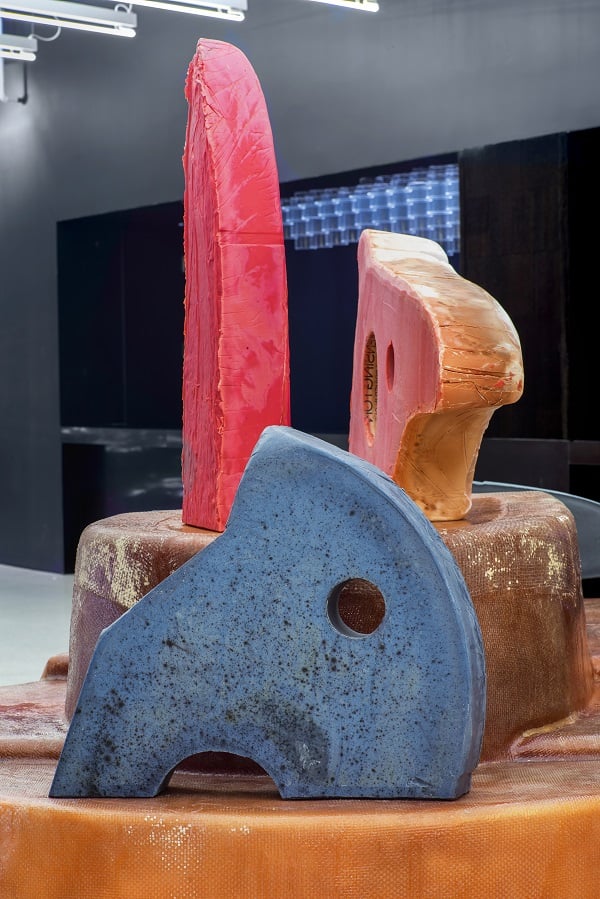Art & Exhibitions
Neville Wakefield Transforms Red Bull Studios Into Giant Spa
The whole thing sounds like a Spring Break party.

The whole thing sounds like a Spring Break party.

Cait Munro


Nicolas Lobo during installation.
Photo: Courtesy of the artist.
What do you get when you combine soap, swimming pools, and a tricked-out HVAC system inside a two-story recording studio? The ingredients for “BIO:DIP,” an installation by Nicolas Lobo and Hayden Dunham, that opens at Red Bull Studios New York in Chelsea on February 19.
Following a critically-acclaimed installation by artists Jonah Freeman and Justin Lowe with artist-musician Jennifer Herrema, the site has become associated with cool, immersive collaborations.
Curator Neville Wakefield describes the exhibition, for which Lobo and Dunham were each given free reign over a single level, as “two one-person shows that happen to be within the same space, rather than a two-person group show.”
“I really like the idea of these two autonomous bodies of work coming together within this other body, which is the body of the building and the architecture and all that it contains, and what it represents,” he told artnet News via telephone. “I was also interested in the way that [Red Bull Studios] functions kind of a little bit like an organism, in the sense that there are these spaces within the space that are about art, but also about recording, music, and retail—I like spaces that are impure or hybridized in some way.”

Nicolas Lobo, installation shot.
Photo: Courtesy the artist and Red Bull Studios.
For Lobo, a Los Angeles-born, Miami-based installation artist, this means revisiting the swimming pool—a key component of his 2015 solo exhibition at the Perez Art Museum Miami—by bringing several large fiberglass pools into the exhibition space and using them as casts for soap sculptures before inverting them and using them as pedestals. The pools will later be returned to the company they are on loan from and sold.
“This is in a lot of ways a direct continuation of [the PAMM show],” Lobo told artnet News during a phone call following an all-night install session. “It’s about treating the swimming pool as an industrial space. One of the main differences with this project, though, is that it kind of revolves around the idea that the swimming pools get returned to the factory and kind of continue their life as swimming pools. It’s adding another layer to it.”
No word on whether or not the pool’s buyers will know they are purchasing a veritable readymade in addition to a place to splash around, but Lobo imagines they will simply be returned to the warehouse and “kind of just get lost again in the mix,” he says.
The final aspect of Lobo’s installation is smearing red lipstick over the building’s windows, giant barrels of which were delivered to Red Bull Studios in a hue that matches the undercarriage of the swimming pools. If you just pictured a dozen people furiously scribbling on the windows with lipstick tubes, you’re not alone, but Lobo says its less about the medium itself than the idea of using a lot of something that is usually contained in small quantities.

Hayden Dunham.
Photo: Katie McCurdy.
If Lobo’s work is about transforming the space in very in-your-face ways (giant swimming pools, smears of lipstick), Dunham’s approach is more subtle, at least superficially.
By tapping into the building’s HVAC system, Dunham, who is under new representation by Andrea Rosen, creates a kind of invisible sculptural entity that is nonetheless apparent to visitors.
“There is a very distinct relationship between internal and external conditioning systems. Some more visible than others. Many that can’t be seen but felt,” Dunham told artnet News in an email. “It is that feeling in a room of people when you become self conscious that your body is producing so much heat that you are transcending into other people’s noses. That discomfort and awareness that the air temperature in the room is causing your personal temperature to rise.”
Frozen sculptural forms will melt, then turn into vapor, before finally passing through the bodies of viewers as breathed air. It’s the kind of art you literally have no choice but to consume.
“I think what’s interesting is that these artists are kind of making you very physically aware,” Wakefield noted, dubbing the installation “part laboratory, part spa.”

Nicolas Lobo, installation shot.
Photo: Courtesy the artist and Red Bull Studios.